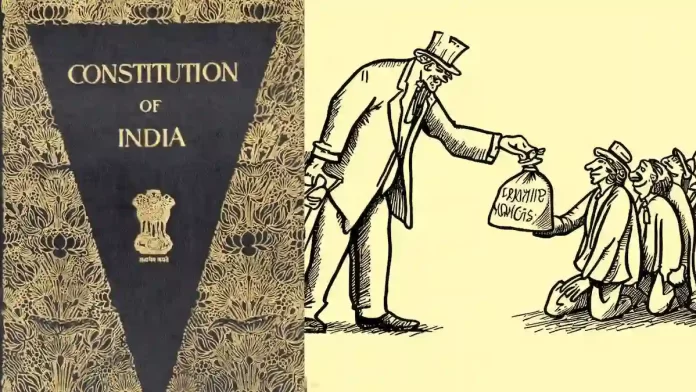Article 335 of the Indian Constitution, which states that the claims of the members of the Scheduled Castes (SC) and the Scheduled Tribes (ST) shall be taken into consideration in appointments to services and posts, while maintaining the efficiency of administration, has a complex history that sheds light on its limitations and flaws.
The initial Draft Article 296, which later became Article 335 was originally aimed to ensure representation of minorities in government appointments.
However, after the partition of India, the focus shifted towards the representation of SC and ST communities, and other minority groups were left out.
During the constituent assembly debates, some members proposed an amendment that gave the State the power to extend the Draft Article’s benefits to any community that it felt was not adequately represented in government.
Another Member wanted to bring ‘other castes who are educationally and socially backward‘ under the ambit of this provision.
All these suggestions were firmly rejected and only the SC and ST communities were added in the final draft.
The exclusion of other backward and under-represented communities from the Article 335 and singling out only SC and ST communities therein is deeply problematic for several reasons.
The Constitution should ideally strive for equality, inclusivity and representation of all marginalised and under-represented communities in socio-political, administrative and governing institutions, and singling out SC and ST communities reinforces a casteist and stereotypical narrative.
By neglecting the concerns of other under-represented communities in governance and administration, Article 335 perpetuates a hierarchical structure within the marginalised communities themselves, undermining the spirit of equal opportunity.
Some scholars have also pointed an ulterior motive behind the above exclusion.
According to subaltern scholars, the current wordings of the article 335 was meant to prevent the unity of marginalised, minorities and backward classes who together become a mammoth majority in India.
Because when combined together all these communities constitute over 90% of all Indians (approx. population of SCs, STs, OBCs and Religious Minorities as per census 2011).
Perhaps, the dominant leaders of the constituent assembly who mostly came from tiny minority of upper classes felt threatened by an aggressive Muslim League style Bahujan-Backward politics if all these communities were to unite for their rights and representation.
Even a fractional social and electoral combination of these communities was sufficient to unseat any government in power.
Thus, the divide and rule strategy and social and communal gerrymandering as inherited from British rule was effectively used in post-independent India to prevent such threats to ruling classes.
Another issue with Article 335 lies in determining who gets to consider the claims of SCs and STs and on what basis.
Theoretically it is state but in practice, it often falls to the dominant community in power, raising concerns about biased decision-making and perpetuation of power imbalances.
It is essential to ensure that the process of evaluating claims is impartial, transparent, and inclusive of diverse perspectives.
Moreover, the provision raises questions about the definition of “efficiency in administration.” Who gets to decide what constitutes efficiency?
The lack of clarity on this matter allows for subjective interpretations and potential misuse of power.
The definition should be well-defined and inclusive, considering the diversity of administrative needs and the overarching goal of social justice.
Furthermore, Article 335 can be seen as deeply problematic, as it creates a patronizing tone towards the SC and ST communities.
By framing it as a favor or special consideration, it reinforces stereotypes of these communities as incapable or needing assistance.
The provision should be rephrased in a manner that promotes genuine equal opportunities and recognises the potential and capabilities of all individuals, regardless of their social background.
While Article 335 might have aimed to address the representation of marginalised communities, its current form falls short of achieving true equality and inclusivity.
The provision’s casteist nature, exclusion of OBCs, minorities and other under-represented and marginalised communities, ambiguity in decision-making, and patronising language towards SCs and STs all contribute to its limitations and flaws.
It is crucial to critically examine and reform such provisions to ensure a fair and just society that upholds the principles of equality and social justice for all.
